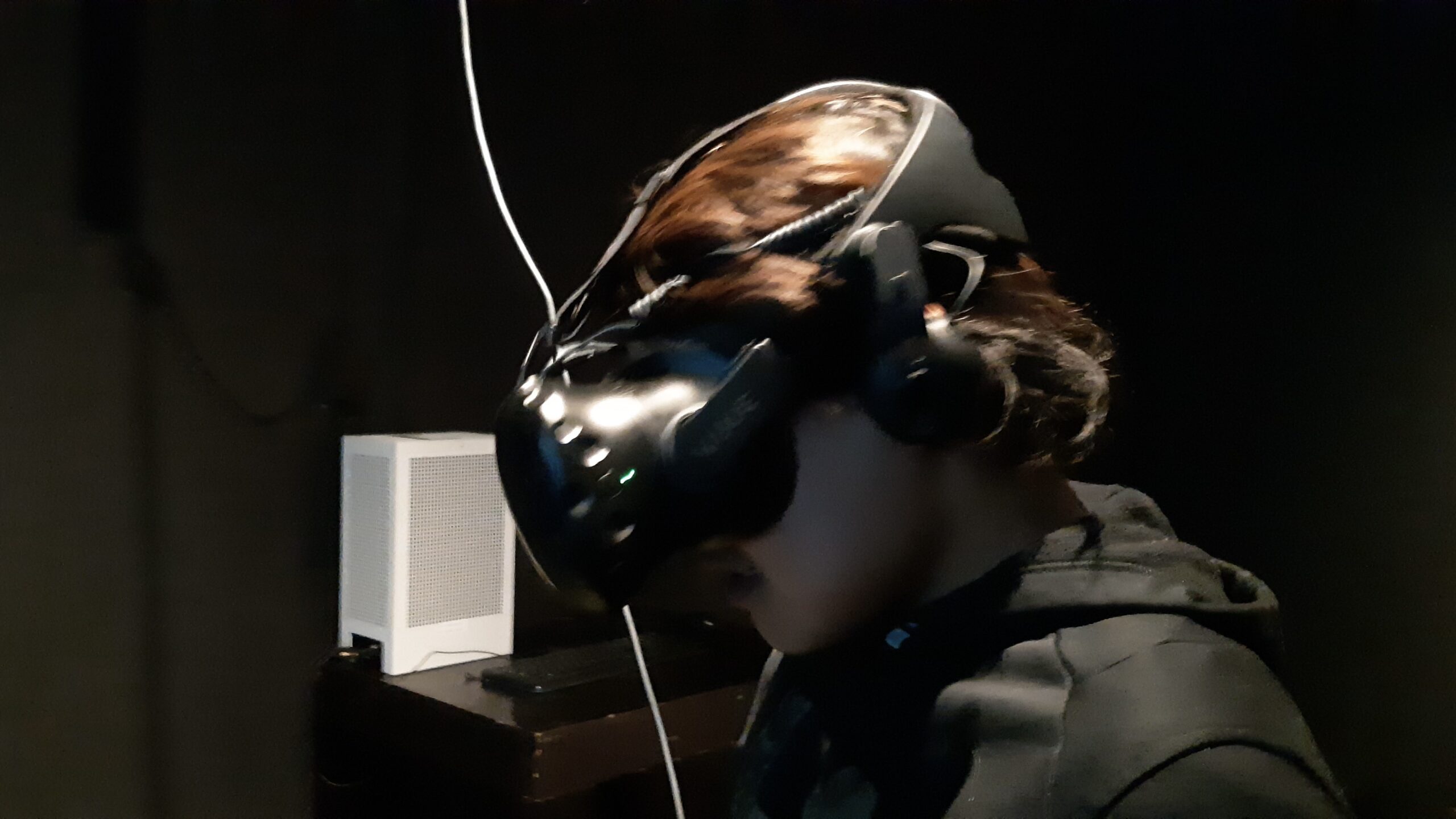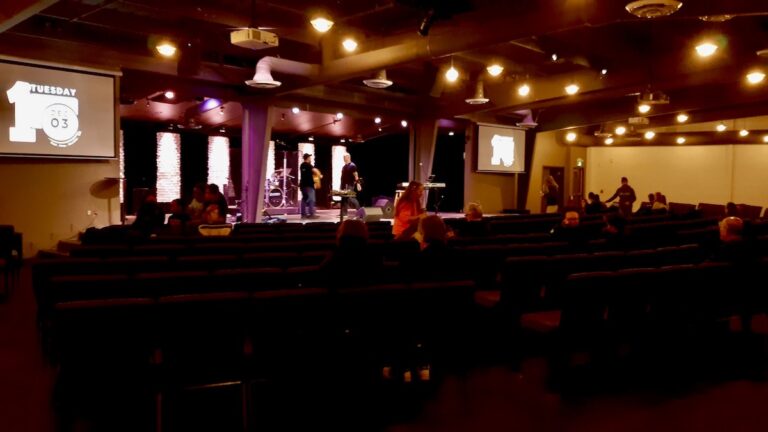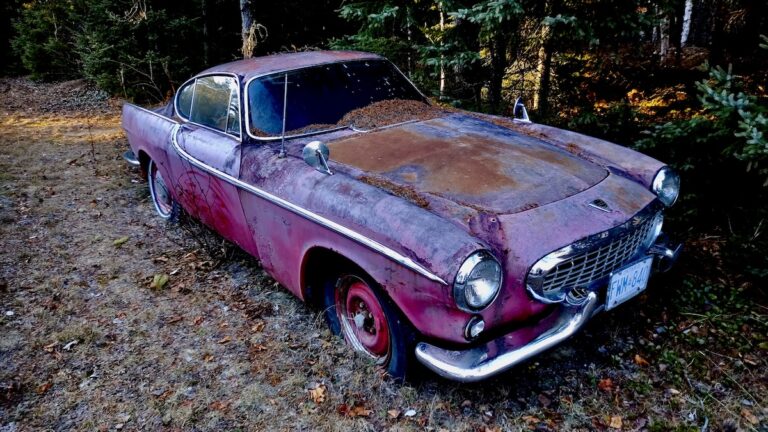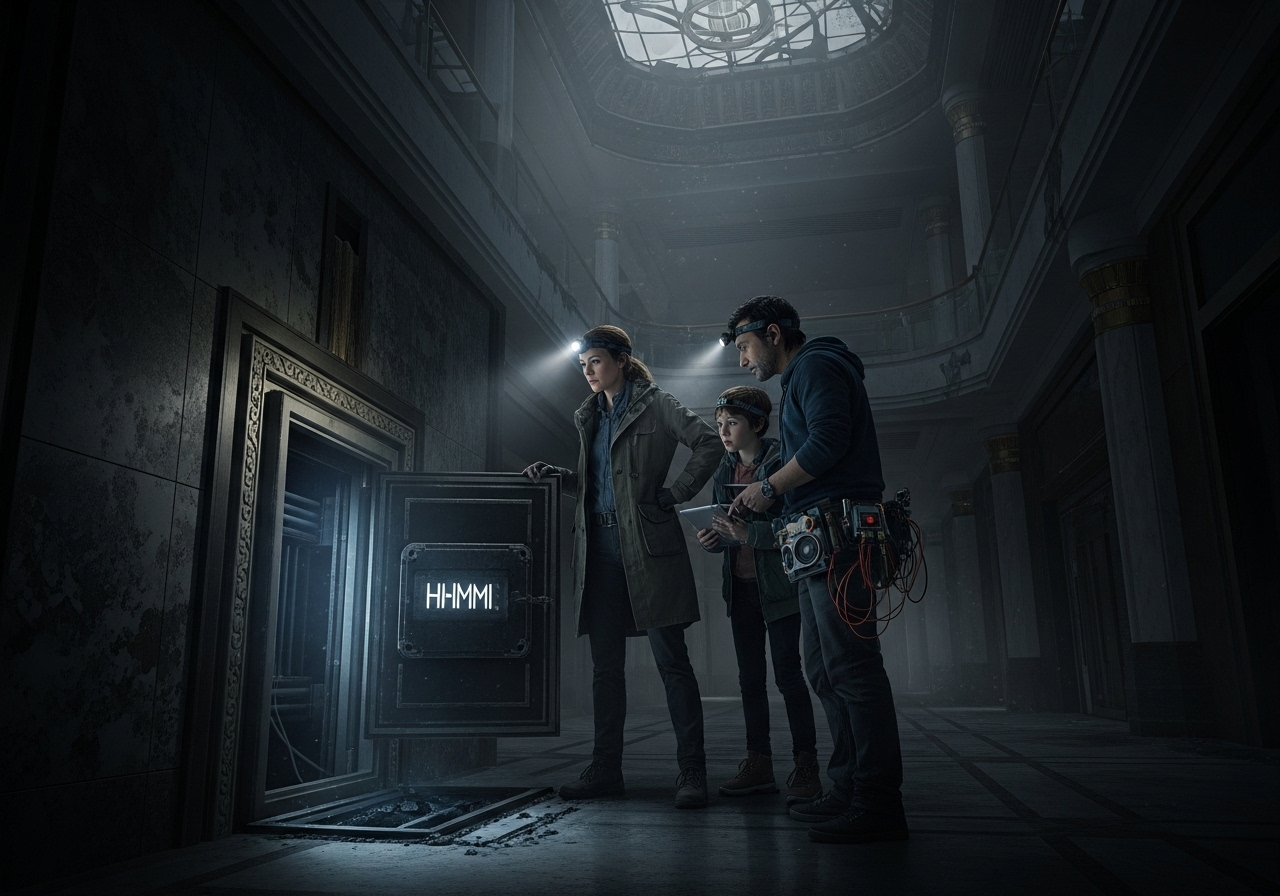
Emerging youth artist and musician Tony Eetak explores a VR installation in summer 2024 at the Urban Shaman Contemporary Art Gallery in Winnipeg, Manitoba.
Many artists and arts organizations are stepping into a new era of digital innovation, leveraging tools like UX/UI design, virtual reality (VR), and biophilic principles to transform how they connect with audiences and tell their stories. And for many smaller, rural, and northern programs, these approaches are not just about modernization—they are essential for survival, accessibility, and sustaining meaningful connections in an ever-increasing digital world.
This year, the Winnipeg-based Arts Incubator program with Art Borups Corners are excited to be revisiting virtual reality as a storytelling tool, a medium they last explored a few years ago. Combining VR with data analysis, they’re exploring how artists and arts organizations can communicate complex issues—such as funding challenges, geographic disparities, and even the impact of their work—in ways that are both visually engaging and deeply resonant with audiences.
“We’ve been really excited to dive back into VR,” said Jamie Bell, one of the founding members behind this year’s program. “Storytelling through virtual reality lets us take something like a dense dataset and transform it into a visual, immersive experience. It’s a great way to present a wide range of stories and approaches, especially for small, rural, and northern arts projects that often feel overlooked.”
For youth leader and program member Tony Eetak, a VR experience at the Urban Shaman Contemporary Art Gallery last summer in Winnipeg was transformative. “Experiencing virtual reality was incredible,” Eetak shared. “It was so cool to see how VR can bring stories and art to life in ways I never imagined. It gave us so many neat ideas for how we can use it to share our own stories and experiences.”
This integration of technology with storytelling highlights the broader importance of digital tools like UX and UI design in the arts. Though often associated with tech companies, UX/UI principles are increasingly vital for arts organizations. A well-designed website or digital archive, for example, can bridge physical distances and allow rural or northern initiatives to connect with global audiences. It’s also about making the arts more accessible while enhancing the efficiency of internal workflows.
“Digital interaction is no longer optional,” Bell emphasized. “Whether it’s building accessible websites, designing virtual exhibits, or creating tools for interactive learning, the fundamentals of UX and UI design are essential to ensuring the arts remain inclusive and impactful.”
Beyond improving access for audiences, these tools also strengthen organizational practices. “By incorporating UX/UI principles into our workflows, we’re not only improving how people interact with our programs but also making it easier to share our impact with stakeholders,” Bell added.
However, the program’s vision extends beyond technology. A new focus this year is on integrating biophilic design and biomimicry into both physical and virtual spaces. Inspired by nature, these principles encourage sustainable, restorative environments that reflect the deep connections many rural and northern organizations have to the land. The Winnipeg-led activities are also supported by the OpenAI Researcher Access Program, democratizing access to advanced tools, technologies and resources.
“Biophilic design and biomimicry offer so much more than aesthetic value,” Bell explained. “They bring sustainability and innovation to the forefront, whether it’s in designing a community space or a virtual environment. These approaches remind us that creativity and nature are deeply intertwined.”
For example, virtual exhibit inspired by biomimicry can mimic the patterns of a forest ecosystem, creating an online space that feels alive and immersive. Physical spaces designed with biophilic principles can inspire creativity, support mental wellbeing, and address practical challenges like energy efficiency and environmental impact. The team sees these approaches as critical for incubating arts environments that are not only functional but also deeply inspiring for those who engage with them.
In their fall and winter program, UX/UI design, VR, and biophilic principles converge to create innovative, multidimensional solutions for complex challenges. Moving beyond the numbers, this year’s program theme integrates technology, storytelling, and sustainability to better support small and under-resourced arts organizations. A central goal is to help artists and small, northern and rural organizations understand how to build adaptive systems through collaboration, enabling them to tackle emerging challenges while staying deeply connected to their unique local contexts.
“For us, this year is about looking forward with intention and looking back at the practices that have guided us,” Bell said. “It’s not just about technology or code. It’s about weaving together everything we’ve learned to build spaces and systems that inspire, connect, and sustain the arts for generations to come.”





